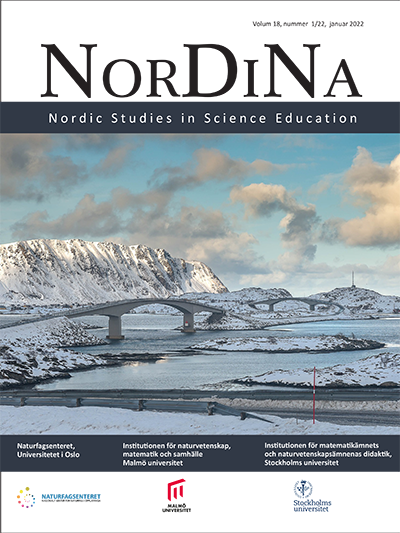Incorporating creativity in science and mathematics teaching:
Teachers’ views on opportunities and challenges
DOI:
https://doi.org/10.5617/nordina.8620Abstract
Although creativity constitutes part of 21st century skills, realizing a curriculum that emphasizes creativity in science and mathematics appears to be a challenge. In this study, we investigate how lower secondary science and mathematics teachers understand the concept of creativity, how it can be promoted, and what hinders creativity in schools. Eight teachers were involved in the study, and their views were investigated through group interviews. It was revealed that teachers adopt three perspectives pertaining to how creativity can be fostered in the classroom: the nature of tasks and how they are presented and organized, the need for background knowledge, and the requirement of a supportive classroom environment. A major concern for teachers was how creativity could form part of the assessment process, since assessment systems influence what occurs in the classroom. Further, school cultures that emphasize objectivity and documentability tend to result in teachers prioritizing convergent thinking and the reproduction of knowledge, preventing the inclusion of creativity in teaching. The core values and principles for learning stated in the new curriculum introduced in Norway in 2020 include that students should experience the joy of creating, engagement, and the urge to explore. The results indicate that assessment dilemmas are the main obstacles in the realization of these intentions.
Downloads
Published
Issue
Section
License
Authors who publish with this journal agree to the following terms:- Authors retain copyright and grant the journal right of first publication with the work simultaneously licensed under a Creative Commons Attribution License that allows others to share the work with an acknowledgement of the work's authorship and initial publication in this journal.
- Authors are able to enter into separate, additional contractual arrangements for the non-exclusive distribution of the journal's published version of the work (e.g., post it to an institutional repository or publish it in a book), with an acknowledgement of its initial publication in this journal.
- Authors are permitted and encouraged to post their work online (e.g., in institutional repositories or on their website) prior to and during the submission process, as it can lead to productive exchanges, as well as earlier and greater citation of published work (See The Effect of Open Access).


